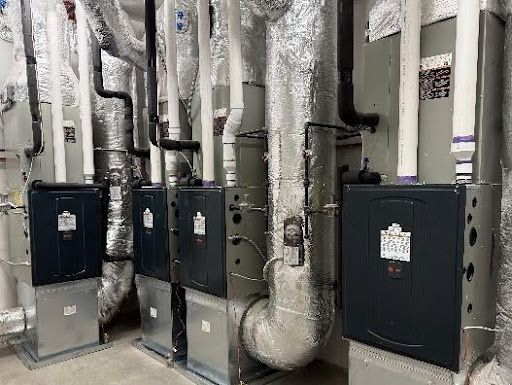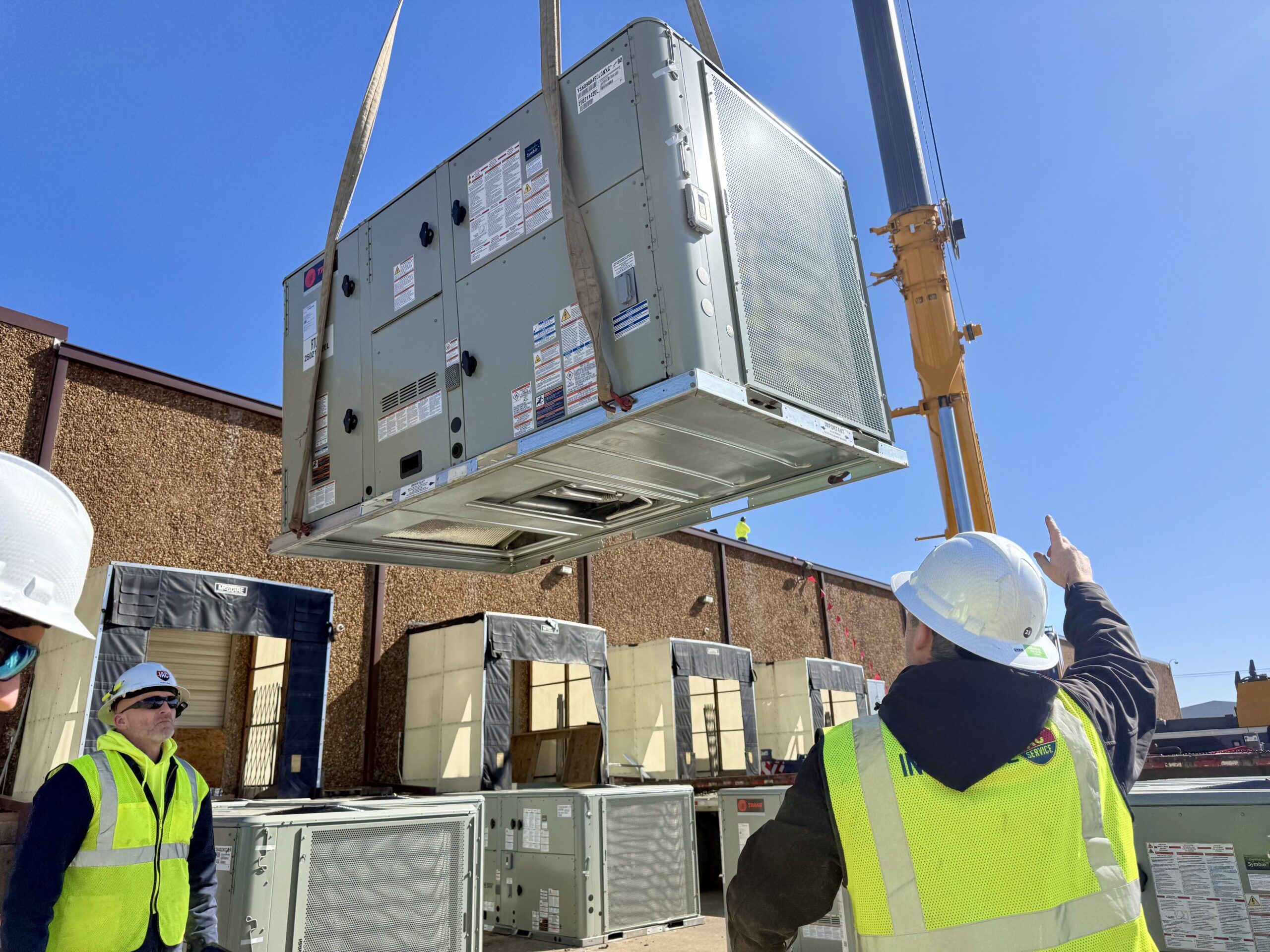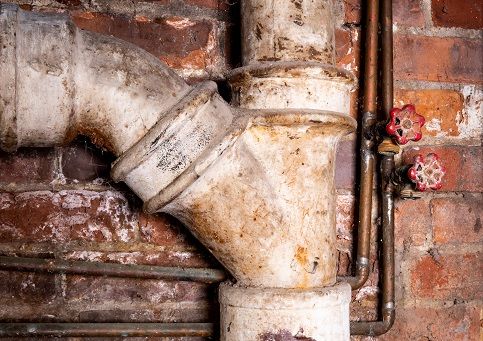Office HVAC Zone Strategy in Nashville: A Property Manager’s Guide
Managing a comfortable, energy-efficient office building in Nashville’s variable climate requires more than just a powerful HVAC system, it demands a smart zoning strategy. As a property or facility manager, understanding how to properly zone your commercial HVAC system can mean the difference between soaring utility bills and optimized performance that keeps tenants happy year-round.
Understanding Commercial HVAC Zoning Systems
HVAC zoning is the practice of dividing your commercial building into separate areas (zones) that can be heated or cooled independently based on specific needs. Think of it as creating climate neighborhoods within your building, each with its own thermostat and control capabilities.
In Nashville, where summer temperatures regularly climb into the 90s and winter can dip into the 20s, a well-designed zone strategy isn’t just a luxury. It’s a necessity for managing operational costs and tenant satisfaction.
Why Nashville Office Buildings Need Strategic Zoning
Nashville’s commercial real estate market presents unique challenges:
- Solar heat gain variations: South and west-facing offices absorb significantly more heat during afternoon hours
- Occupancy fluctuations: Conference rooms, break rooms, and private offices have vastly different usage patterns
- Multi-tenant considerations: Different businesses have different comfort preferences and operating hours
- Seasonal extremes: The 70+ degree temperature swing between January and July demands flexible climate control
Core Components of Effective HVAC Zoning
Modern commercial HVAC zoning relies on electronically controlled dampers installed within your ductwork. These dampers open and close in response to signals from zone thermostats, directing conditioned air only where it’s needed.
Key components include:
- Motorized zone dampers – Control airflow to specific building sections
- Zone thermostats – Monitor temperature and send signals to the control panel
- Zone control panel – Acts as the system’s brain, coordinating damper positions
- Bypass dampers or variable-speed equipment – Prevent pressure buildup when zones close
For facilities managing multiple buildings or complex layouts, HVAC automation controls can integrate all zones into a single, intelligent management platform that learns usage patterns and optimizes performance automatically.
Determining Optimal Zone Configuration
There’s no one-size-fits-all answer, but these factors should guide your zoning decisions:
| Factor | Consideration | Recommended Action |
| Building exposure | Perimeter offices receive more solar heat | Create separate zones for north, south, east, and west exposures |
| Occupancy density | Conference rooms vs. individual offices | Zone high-occupancy areas separately from low-traffic spaces |
| Equipment heat loads | Server rooms, copy rooms, kitchens | Isolate areas with internal heat generation |
| Operating hours | 24/7 operations vs. standard business hours | Enable independent scheduling for different tenant needs |
Implementing a Zone Strategy for Multi-Story Office Buildings
Multi-story buildings present additional complexity. Heat naturally rises, meaning upper floors typically require less heating in winter but more cooling in summer. Many Nashville property managers find success with a hybrid approach combining floor-by-floor zoning with exposure-based zones on individual floors.
Perimeter vs. Interior Zone Strategy
One of the most effective commercial zoning strategies divides floor space into perimeter and interior zones:
Perimeter zones (typically 10-15 feet from exterior walls) experience direct sunlight exposure, heat loss through windows in winter, and greater temperature fluctuations from outdoor weather conditions.
Interior zones remain more stable because they’re insulated by surrounding spaces and protected from solar heat gain. They are primarily affected by occupancy and equipment heat, often requiring cooling even when perimeter zones need heating.
This strategy is particularly valuable in Nashville’s glass-fronted office buildings, where southern exposure can create significant cooling demands even on mild spring days.
Common HVAC Zoning Mistakes to Avoid
Creating too many zones: More isn’t always better. Excessive zoning increases installation costs, creates maintenance complexity, and can cause airflow problems. Most office buildings function optimally with 4-8 well-planned zones per floor.
Ignoring static pressure: When zones close, pressure builds up in the ductwork. Without proper pressure relief, you’ll experience noisy operation, reduced efficiency, and premature equipment failure.
Overlooking occupancy patterns: Zoning based solely on floor plans without considering actual usage patterns wastes the strategy’s potential. Conduct occupancy studies before finalizing your zone design.
Neglecting maintenance access: Zone dampers require periodic inspection and adjustment. If your commercial HVAC maintenance team can’t easily access dampers, issues will go undetected until comfort problems arise.
Integrating Plumbing Considerations into Your Facility Strategy
While planning your HVAC zones, don’t overlook the connection to your plumbing infrastructure. Many commercial buildings in Nashville integrate their plumbing and HVAC systems for optimal efficiency. Particularly when dealing with hydronic heating systems that use hot water distribution, water-source heat pumps that require coordinated plumbing and HVAC zones, and kitchen or breakroom locations where plumbing and HVAC loads intersect.
Taking a holistic approach to your building’s mechanical systems prevents conflicts between trades and ensures coordinated maintenance scheduling. Many facility managers find value in working with contractors who offer both disciplines under one roof.
Energy Management Through Smart Zoning
Nashville’s utility rates make energy efficiency a priority for any commercial property. Strategic zoning delivers measurable savings through several mechanisms:
Reduced runtime: Systems only operate in occupied zones, cutting runtime by 20-40% in typical office buildings.
Load balancing: Prevents oversized equipment from short-cycling by matching capacity to actual demand zone-by-zone.
Improved equipment longevity: Even wear across system components rather than constant operation at full capacity.
When combined with building automation, zone-based strategies enable sophisticated approaches like automated setback schedules for individual zones, adaptive learning that adjusts to actual occupancy patterns, and remote monitoring and adjustment via smartphone or computer.
Retrofitting Existing Buildings vs. New Construction
For new construction: Incorporate zoning from the design-build phase for optimal ductwork layout, equipment sizing, and control system integration. This approach typically costs 15-20% less than retrofitting and delivers superior performance.
For existing buildings: Retrofitting zone controls into established duct systems requires careful assessment of existing ductwork capacity, current equipment sizing, available space for damper installation, and cost-benefit analysis based on current utility expenses.
Many Nashville office buildings built before 2000 lack any zoning whatsoever. For these facilities, even basic zone upgrades deliver quick payback through reduced energy costs.
Maintenance Requirements for Zoned HVAC Systems
Zone systems add complexity, but they don’t necessarily increase maintenance burden, if you establish proper protocols:
- Quarterly zone testing: Verify that dampers respond correctly to thermostat signals
- Annual control calibration: Check and recalibrate zone thermostats and control sequences
- Filter changes: Monitor filter conditions more closely in zoned systems
- Control software updates: Keep building automation systems updated with latest firmware
Investing in a comprehensive preventive maintenance program protects your zoning investment and prevents small issues from becoming costly comfort problems.
Tenant Satisfaction and Zone Control
One underappreciated benefit of proper zoning is tenant satisfaction. When businesses have meaningful control over their space’s climate, complaints drop dramatically. Consider providing individual zone thermostats, override capabilities for special events or after-hours usage, and clear communication about how the system works.
Remember that perceived control matters as much as actual temperature. Even if ranges are limited, tenants who can adjust their own thermostat are typically more satisfied than those who must call management for changes.
Take Control of Your Building’s Comfort and Efficiency
Strategic HVAC zoning isn’t just about technology, it’s about matching your building’s mechanical systems to how your tenants actually use the space. Whether you’re managing a historic downtown high-rise or a newer suburban office park, the right zone strategy delivers measurable improvements in energy efficiency, tenant satisfaction, and equipment longevity.
As Nashville’s commercial real estate market continues to grow, property managers who invest in intelligent building systems will find themselves with a competitive advantage. Prospective tenants increasingly prioritize sustainability and comfort, making proper HVAC zoning a valuable selling point.
Ready to optimize your office building’s HVAC performance? The commercial HVAC experts at Interstate AC specialize in designing and implementing zone strategies for Nashville-area office buildings. With over 20 years of experience serving property managers and facility teams throughout Middle Tennessee, we understand the unique climate challenges your building faces. Contact our commercial team today for a comprehensive assessment of your current system and customized recommendations for improving comfort while reducing operational costs.


